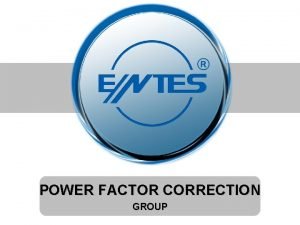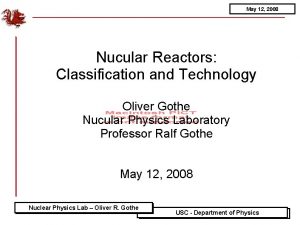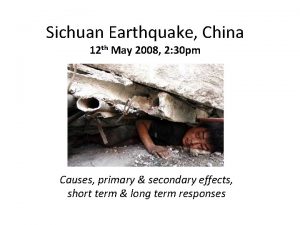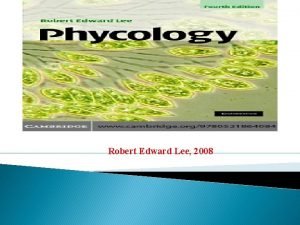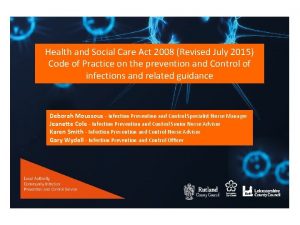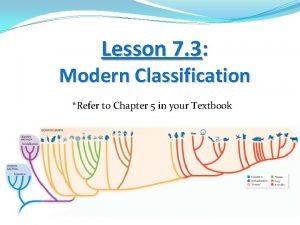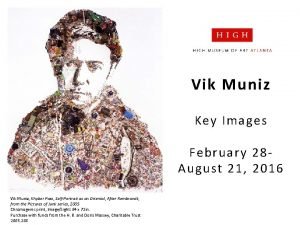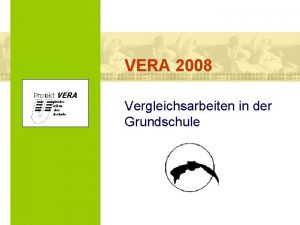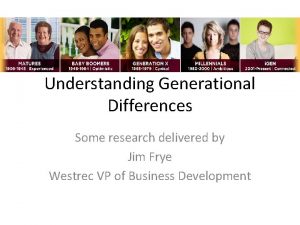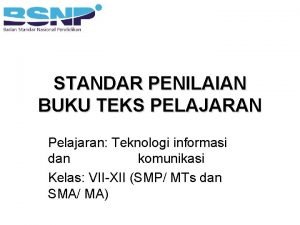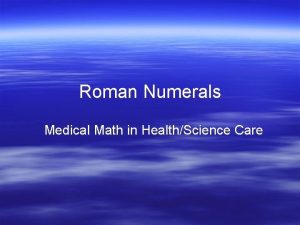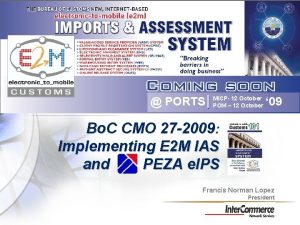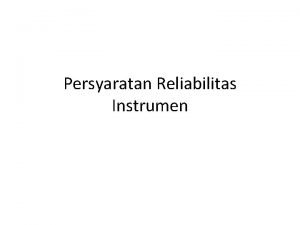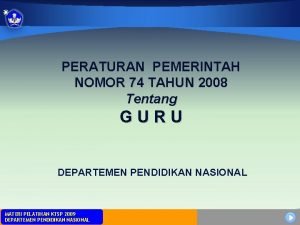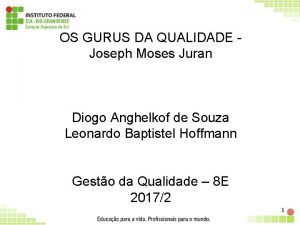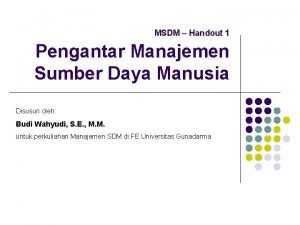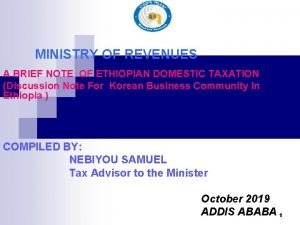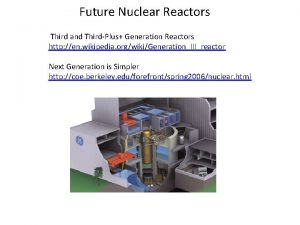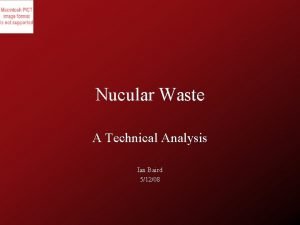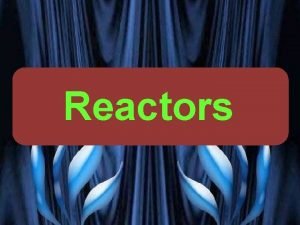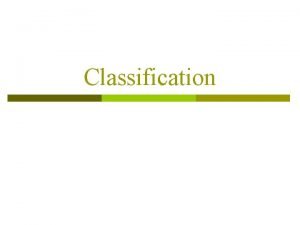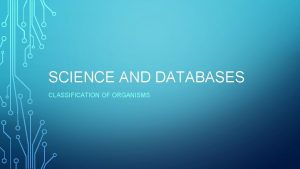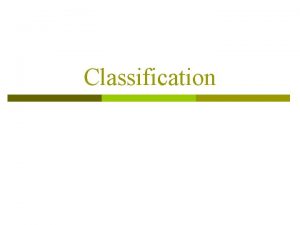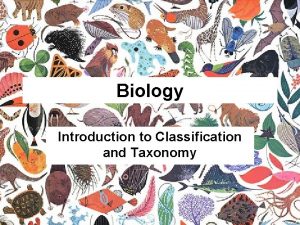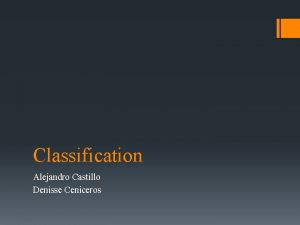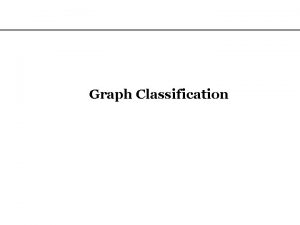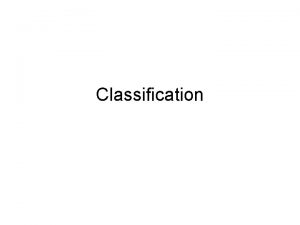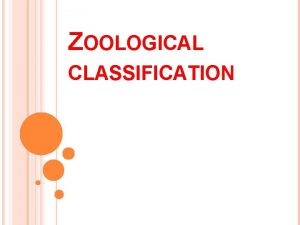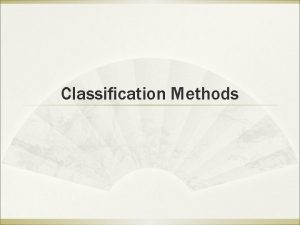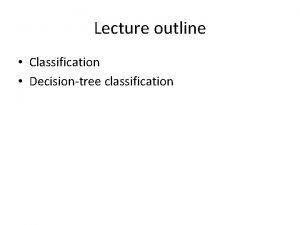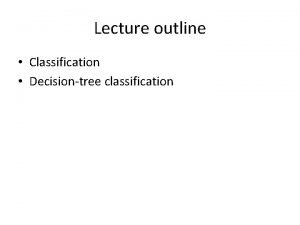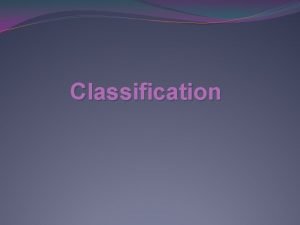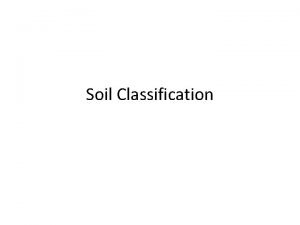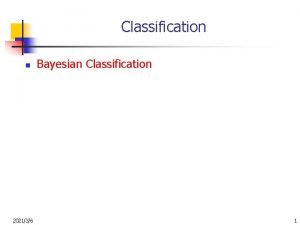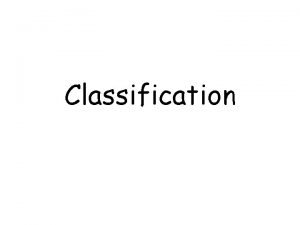May 12 2008 Nucular Reactors Classification and Technology




























- Slides: 28

May 12, 2008 Nucular Reactors: Classification and Technology Oliver Gothe Nucular Physics Laboratory Professor Ralf Gothe May 12, 2008 Nuclear Physics Lab – Oliver R. Gothe Princeton - Department of Chemistry USC -- Department Princeton Department of of Physics Chemistry

May 12, 2008 Reaction Types • Three main reaction types: • Radioactive Decay • Atomic Batteries • Radioisotope thermoelectric generators • passive • Nuclear Fusion • Not suitable for power production yet • Nuclear Fission • Used in most reactors including all commercial ones Nuclear Physics Lab – Oliver R. Gothe Princeton - Department of Chemistry USC -- Department Princeton Department of of Physics Chemistry

May 12, 2008 Reactors - Introduction • Conventional thermal power plants • All have a fuel source to provide heat • Gas, coal, or oil • Nuclear fission • Uranium-235 or plutonium-239 • Produce steam • Drive a turbine that generates electricity (86%) • Enriched uranium is uranium in which the percent composition of uranium-235 has been increased from that of uranium found in nature Nuclear Physics Lab – Oliver R. Gothe Princeton - Department of Chemistry USC -- Department Princeton Department of of Physics Chemistry

May 12, 2008 Radioactive Decay (passive) - RTG • Electric Generator • Obtains power from passive radioactive decays • Utilized in satellites and space probes • Seebeck effect • Junction of two dissimilar metals at different temperatures create a current • Fuel • Long half life, low shielding. . . • Plutonium 238 most common Nuclear Physics Lab – Oliver R. Gothe Princeton - Department of Chemistry USC -- Department Princeton Department of of Physics Chemistry

May 12, 2008 Advantages and Disadvantages • Advantages: • Relatively constant power production • Useful for long time missions • Solar Panels not applicable • Disadvantages: • Decays over time • May require shielding • Radioactive waste Nuclear Physics Lab – Oliver R. Gothe Princeton - Department of Chemistry USC -- Department Princeton Department of of Physics Chemistry

May 12, 2008 Nuclear Fusion • Experimental Technology • Not yet in use • Generally utilizes Hydrogen as fuel • Contained with Magnetic fields • Farnsworth-Hirsch Fusor • Not viable for power creation • Neutron Generator Nuclear Physics Lab – Oliver R. Gothe Princeton - Department of Chemistry USC -- Department Princeton Department of of Physics Chemistry

May 12, 2008 Nuclear Fission Reactors - Overview • First Reactor: • Chicago Pile-1 • Enrico Fermi in 1942 • Inspired by the discovery that Uranium fissions after being bombarded with neutrons • Fission process creates new neutrons • Creates chain reaction that needs to be moderated • Unmoderated reaction used for bombs Nuclear Physics Lab – Oliver R. Gothe Princeton - Department of Chemistry USC -- Department Princeton Department of of Physics Chemistry

May 12, 2008 Nuclear Fission - Process • Fission is initialized in the reaction chamber • Creates Chain reaction Nuclear Physics Lab – Oliver R. Gothe Princeton - Department of Chemistry USC -- Department Princeton Department of of Physics Chemistry

May 12, 2008 Nuclear Fission - Process • Fission is initialized in the reaction chamber • Creates Chain reaction • Moderators are used to control the amount of neutrons in the reactor chamber Nuclear Physics Lab – Oliver R. Gothe Princeton - Department of Chemistry USC -- Department Princeton Department of of Physics Chemistry

May 12, 2008 Nuclear Fission - Process • Fission is initialized in the reaction chamber • Creates Chain reaction • Moderators are used to control the amount of neutrons in the reactor chamber • Heat released from fission is processed via heat exchangers or directly via steam turbines Nuclear Physics Lab – Oliver R. Gothe Princeton - Department of Chemistry USC -- Department Princeton Department of of Physics Chemistry

May 12, 2008 Nuclear Fission - Process • Turbines create electricity and the coolant is recycled through the reactor • The environmental problems with nuclear reactors is the heat that is released into the environment from the condensors. Nuclear Physics Lab – Oliver R. Gothe Princeton - Department of Chemistry USC -- Department Princeton Department of of Physics Chemistry

May 12, 2008 Nuclear Fission – Reactor Classification • Two Types • Thermal vs. Fast Neutron speeds • Thermal Reactors (most common) • Classified by Moderator Material • Absorption cross-section much smaller than fission cross-section • Natural Uranium • Fast Reactors • No moderator • Requires Enriched Uranium Nuclear Physics Lab – Oliver R. Gothe Princeton - Department of Chemistry USC -- Department Princeton Department of of Physics Chemistry

May 12, 2008 Fast Neutron Reactor • Fuel must be enriched • Produces fast neutrons • Can be used for transmutation • Fuel Production • Breeder Reactors • Fast Breeder Reactors Nuclear Physics Lab – Oliver R. Gothe Princeton - Department of Chemistry USC -- Department Princeton Department of of Physics Chemistry

May 12, 2008 Nuclear Fission - Moderators • Graphite moderate reactors • Graphite has high neutron absorption cross section • Water moderated reactors • Heavy water moderated reactors • can be fueled with unenriched uranium • Light Water moderated reactors • Negative feedback stabilizes reaction (neutron absorption) • Light element moderated reactors • are moderated by a light elements such as Li or Be • Organically moderated reactors • Use biphenyl and terphenyl as moderator and coolant Nuclear Physics Lab – Oliver R. Gothe Princeton - Department of Chemistry USC -- Department Princeton Department of of Physics Chemistry

May 12, 2008 Nuclear Fission Reactors - Coolant • Pressurized Water Cooling • specialized pressure vessel • A pressurizer is partially filled with water • steam bubble is maintained above it by heating the water with submerged heaters • Avoid film boiling Nuclear Physics Lab – Oliver R. Gothe Princeton - Department of Chemistry USC -- Department Princeton Department of of Physics Chemistry

May 12, 2008 Nuclear Fission Reactors - Coolant • Pressurized Water Cooling • specialized pressure vessel • A pressurizer is partially filled with water • steam bubble is maintained above it by heating the water with submerged heaters • Avoid film boiling Nuclear Physics Lab – Oliver R. Gothe Princeton - Department of Chemistry USC -- Department Princeton Department of of Physics Chemistry

May 12, 2008 Nuclear Fission Reactors - Coolant • Boiling water reactor • Simplification of designs for civilian purposes • Heat is generated directly in the reaction chamber • Chamber is still pressurized and boils at about 285 degrees Celsius Nuclear Physics Lab – Oliver R. Gothe Princeton - Department of Chemistry USC -- Department Princeton Department of of Physics Chemistry

May 12, 2008 Pool Type Reactors • In pool type reactors the reactor core and control roads are immersed into a pool • Water is simultaneously: • Cooling agent • Moderator • Shielding • Used for: • Neutron generation • Training • Not for generating electricity Nuclear Physics Lab – Oliver R. Gothe Princeton - Department of Chemistry USC -- Department Princeton Department of of Physics Chemistry

May 12, 2008 Liquid Metal Cooled Reactors • Liquid metal cooled nuclear reactor • primary coolant is a liquid metal • Used in nuclear submarine use • extensively studied for power generation applications • Fast Breeder Reactors • Lead • Sodium • Bismuth • Mercury Nuclear Physics Lab – Oliver R. Gothe Princeton - Department of Chemistry USC -- Department Princeton Department of of Physics Chemistry

May 12, 2008 Gas Cooled Reactors • �Gas cooled reactors • Use inert gases such as Helium or Carbon dioxide to cool • Some heat the gas enough to run turbines • Older models run through heat exchangers to generate steam • Can be refuelled while online • Higher thermal efficiency than BWRs • Uses fuel less efficiently though Nuclear Physics Lab – Oliver R. Gothe Princeton - Department of Chemistry 1. Charge tubes 2. Control rods 3. Graphite moderator 4. Fuel assemblies 5. Concrete pressure vessel and radiation shielding 6. Gas circulator 7. Water 8. Water circulator 9. Heat exchanger 10. Steam USC -- Department Princeton Department of of Physics Chemistry

May 12, 2008 Molten Salt Reactors • Molten salt reactors • cooled by circulating a molten salt • mixture of fluoride salts, such as Li. F and Be. F 2 • Uranium is often dissolved in the matrix • Maintenance issues • Corrosion • Can use spent fuel • Immature Technology Nuclear Physics Lab – Oliver R. Gothe Princeton - Department of Chemistry USC -- Department Princeton Department of of Physics Chemistry

May 12, 2008 Generations of Nuclear Reactors • Generation I reactors • Developed in 1950 -60 s • used natural uranium fuel • graphite as moderator • Generation II reactors • use enriched uranium fuel • mostly cooled and moderated by water • Generation III • advanced reactors • developments of the second generation with enhanced safety. • Generation IV • • drawing board burn the long-lived actinides now forming part of spent fuel Nuclear Physics Lab – Oliver R. Gothe Princeton - Department of Chemistry USC -- Department Princeton Department of of Physics Chemistry

May 12, 2008 Examples – Pressurized Water Reactor • Pressurized Water Reactors • high pressure liquid • majority of current reactors • considered the safest and most reliable Diablo Canyon Nuclear Physics Lab – Oliver R. Gothe Princeton - Department of Chemistry USC -- Department Princeton Department of of Physics Chemistry

May 12, 2008 Examples – Boiling Water Reactor • Boiling Water Reactors (BWR) • Cooled and moderated by water • Lower pressure • Water boils in reactor • Simpler • Potentially more stable • Substantial percentage of modern reactors Nuclear Physics Lab – Oliver R. Gothe Princeton - Department of Chemistry Laguna Verde nuclear power plant USC -- Department Princeton Department of of Physics Chemistry

May 12, 2008 Examples – Pressurized Heavy Water Reactor • Pressurized Heavy Water Reactor (PHWR) • Heavy water cooled and moderated • Hundreds of pressure tubes • Fueled with natural uranium • Thermal neutron reactor design • Can be refueled without shutdown Nuclear Physics Lab – Oliver R. Gothe Princeton - Department of Chemistry CANDU at Qinshan USC -- Department Princeton Department of of Physics Chemistry

May 12, 2008 Examples – High Power Channel Reactor • High Power Channel Reactor (RBMK) • Produces plutonium as well as power • Graphite moderator • Too large to have containment buildings • Chernobyl accident • RBMK reactors are considered the most dangerous reactor designs in use Nuclear Physics Lab – Oliver R. Gothe Princeton - Department of Chemistry The Ignalina Nuclear Power Plant USC -- Department Princeton Department of of Physics Chemistry

May 12, 2008 Examples – Advanced Gas Cooled Reactor • Advanced Gas Cooled Reactor (AGCR) • Graphite moderated • CO 2 cooled • High thermal efficiency compared with PWRs • Thermal neutron reactor design Nuclear Physics Lab – Oliver R. Gothe Princeton - Department of Chemistry Torness nuclear power station USC -- Department Princeton Department of of Physics Chemistry

May 12, 2008 Questions? Nuclear Physics Lab – Oliver R. Gothe Princeton - Department of Chemistry USC -- Department Princeton Department of of Physics Chemistry
 Shunt reactors for power factor correction
Shunt reactors for power factor correction Nucular reactor
Nucular reactor 2008 2008
2008 2008 12th may 2008
12th may 2008 Classification of algae by lee
Classification of algae by lee Hci design patterns
Hci design patterns Chronological tabulation is based on
Chronological tabulation is based on Health and safety social care act 2008
Health and safety social care act 2008 Health and safety social care act 2008
Health and safety social care act 2008 Lazy vs eager
Lazy vs eager Traditional classification vs modern classification
Traditional classification vs modern classification Windows server ipam
Windows server ipam 2008-2009 school year
2008-2009 school year Vik muniz sugar children: valicia bathes in sunday clothes
Vik muniz sugar children: valicia bathes in sunday clothes Projekt vera 3
Projekt vera 3 Microsoft server
Microsoft server 2008 generation called
2008 generation called Bagaimana asas penilaian buku
Bagaimana asas penilaian buku Ssis 2008 training
Ssis 2008 training 2008 in roman numerals
2008 in roman numerals Rys 9 1998
Rys 9 1998 Vasp customs
Vasp customs Sukardi 2008
Sukardi 2008 Pp no 74 tahun 2008 tentang guru
Pp no 74 tahun 2008 tentang guru Gurus da qualidade juran
Gurus da qualidade juran Nom 001 stps 2008 edificios locales e instalaciones
Nom 001 stps 2008 edificios locales e instalaciones Tujuan fungsional msdm
Tujuan fungsional msdm Stamp duty(amendment) proclamation no. 612/2008
Stamp duty(amendment) proclamation no. 612/2008 Copyright 2008
Copyright 2008
